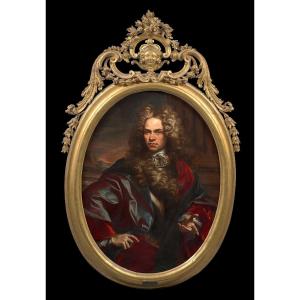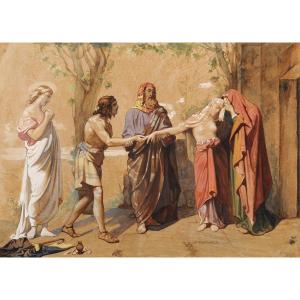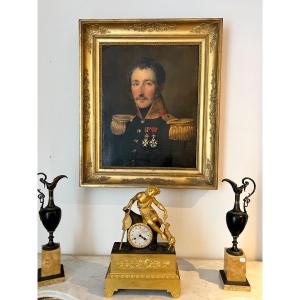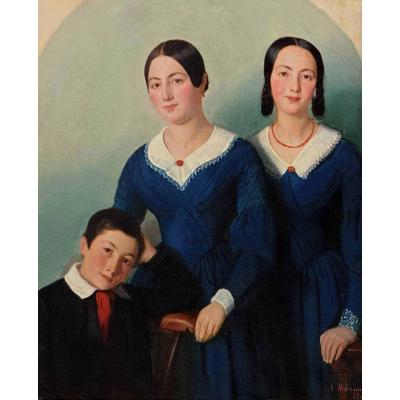(Brussels, 1799 – Brussels, 1893)
Portrait of a young woman with a bouquet of roses
Oil on canvas
H. 70cm; L. 56 cm
Signed Adèle Kindt and dated on the right around the middle of 1853
Marie-Adélaïde, known as Adèle, Kindt belongs to an important movement of women painters in Belgium, which expressed itself in the 1820s and 1830s, in the wake of Sophie Frémiet-Rude, and of which she is the main representative. It was Joseph Cardon, drawing professor at the Brussels academy and friend of his father (a merchant from Saint-Omer), who discovered his artistic qualities. Adèle then attended for some time the workshop of Jacques-Louis David, who had emigrated to Brussels since 1816. Then, probably between 1819 and 1824, she was the student of Sophie Rude (1797-1867), née Frémiet and wife of the famous French sculptor also exiled in Brussels, herself trained by David. In 1824, she also followed the lessons of François-Joseph Navez (1787-1869), another student of David (in Paris, between 1813 and 1815), who then became the leader of neo-classicism in Belgium, and who remained Adèle's mentor for a long time. Note also that Navez directed a workshop for young women painters from 1826 to 1836. A true professional artist with great ambitions, Adèle Kindt exhibited from 1818 in most salons in Belgium and Holland (Brussels, Ghent, Antwerp, The Hague, Haarlem , Amsterdam) and that of Douai in France since 1823. In 1826, she experienced her first real public success with The Last Moments of the Count of Egmont. Many paintings reflect his appetite at the time for historical heroines with romantic destinies, such as Queen Elizabeth of England, Catherine de Medici or Louise de la Vallière, and more generally for subjects of past or contemporary history.
After 1840, it was more portraits and picturesque genre scenes which constituted the bulk of his work; but its critical glory will have faded somewhat. In 1853, Adèle Kindt was an artist recognized by the public and official critics, from whom she received several medals, for example in Douai in 1827 and 1831, Ghent in 1835 or Brussels in 1836; she is also a member of the royal academy of fine arts of these last two cities. She gradually moved away from the historical subjects that marked her early career, and notably painted more and more portraits, but her style still remains very imbued with the influence of her master François-Joseph Navez. The models are mostly feminine, with faces with big, somewhat dreamy eyes, and often wearing flowers. The Art Gallery of South Australia very recently added to its collections a large early portrait (1829), full-length, of Adèle Kindt.






































 Le Magazine de PROANTIC
Le Magazine de PROANTIC TRÉSORS Magazine
TRÉSORS Magazine Rivista Artiquariato
Rivista Artiquariato